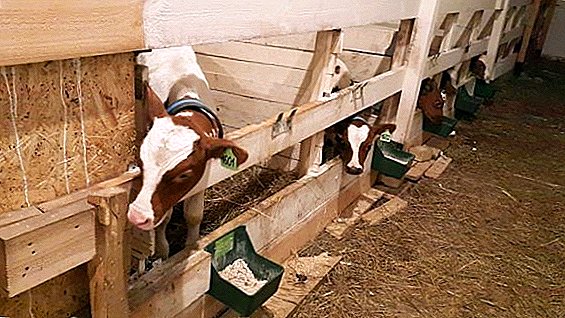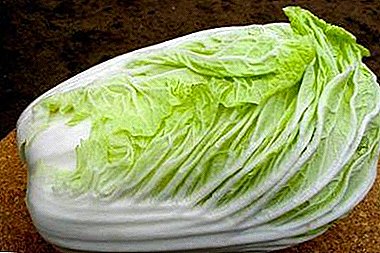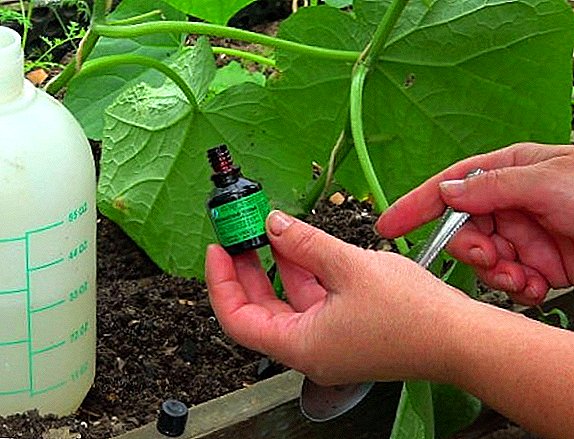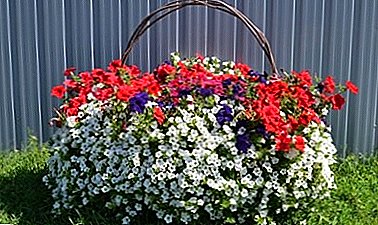 One of the main elements of the improvement of a private house is water pipes. Regardless of when the water supply system is being laid - at the stage of laying the foundation or during the overhaul of the building, the design phase must be approached with full responsibility. How to conduct a plumbing in the house, where to start and what materials to use, let's see.
One of the main elements of the improvement of a private house is water pipes. Regardless of when the water supply system is being laid - at the stage of laying the foundation or during the overhaul of the building, the design phase must be approached with full responsibility. How to conduct a plumbing in the house, where to start and what materials to use, let's see.
What are the wells
Before embarking on the implementation of autonomous water supply, you need to find out the source of the water supply and the methods of its arrangement.
Well in the sand
A well in the sand is considered a more financially economical, budget option. It is a source, the depth of which reaches the first sand layer. This type of water intake allows to obtain clean and clear water, since the aquifers are located after the loamy, filtering water resources.  The well is often used in cases where the occurrence of the water layer reaches 40 m.
The well is often used in cases where the occurrence of the water layer reaches 40 m.
Its main advantages include:
- relatively short drilling time. A well can be formed in just 1-2 days, depending on the technique used and the required depth;
- low cost. The low cost of the well on the sand, compared with the artesian, due to the small depth of the water intake;
- no need to execute documentation for the work.
The process of drilling a well on sand consists of the following measures:
- sampling of water resources;
- obtaining documents on the quality of the soil and the depth of the water;
- well shaft drilling;
Important! It is recommended to drill the shaft manually, as the mechanized method involves performing work at a set depth. This may cause the water source to remain above the bottom of the well.
- strengthening water intake pipes;
- filter arrangement at the bottom. Gravel, which is placed at the bottom of the well, is perfect for the filter element;
- setting up a pumping unit and systematically pumping out water.
A well on the sand is the best solution for a limited budget, a small area of land and a small number of points of water pumping.
Well on limestone
The artesian water intake (a well for limestone) is considered more expensive, since drilling is done at considerable depths.
Its key advantage is that the work can be carried out in almost any place, while the limestone layer is isolated from the groundwater and allows you to get water that does not require additional purification.  Also among the key advantages of the artesian well include:
Also among the key advantages of the artesian well include:
- long service life, about 50 years;
- lack of special services;
- no need to install a special filter;
- the ability to service several residential properties;
- virtually unlimited water supplies.
As for the minuses, there is a high cost of drilling, because the technology is quite complex, requires special equipment and professional skills.
Did you know? According to the legislation, artesian water is a state strategic reserve. This means that it is necessary to obtain appropriate permits for this type of water intake.
The drilling of an artesian well is carried out by a mechanized method: rotary, auger, core or shock-cable. The method will depend on the operating conditions of the well, soil type, terrain.
Necessary equipment and designs
If a well is used as an autonomous water supply, then for the arrangement of the water supply, it is necessary, besides pipes, special equipment: submersible or surface pump, coarse and fine filters, water dispensers.
Pump
The location for the installation of water supply technology depends largely on the nature of the well:
- shallow - a surface pump is considered ideal for it;
- deep - use a submersible pump.
Video: how to choose pumping equipment
Surface type it is cheaper, it is easy to install, unpretentious to maintain. The best option is a pump station "3 in 1", the design of which includes a surface pump, a diaphragm tank and the corresponding automatic elements.
We advise you to learn how to choose a pumping station to give.
Only the suction hose is lowered into the well. This greatly simplifies the arrangement of water intake and maintenance of the pump.
Similar pumping stations have one very significant drawback - a small height of water rise. The pump of the device is capable of raising water from a shallow depth to 10 m.  Because of this, pumping stations have to be located as close as possible to the well itself. Otherwise, additional units will have to be used to overcome the hydroresistance from the source.
Because of this, pumping stations have to be located as close as possible to the well itself. Otherwise, additional units will have to be used to overcome the hydroresistance from the source.
In order to choose a surface pump, consider the following parameters:
- the depth of the waters;
- the height of the water resources in the mine;
- height of the draw point;
- the amount of resources consumed.
Submersible pump it is used when it is necessary to lift water from a depth of more than 10 m. It is equipped with special automation, through which water is supplied from the house. In this case, there are no restrictions on the place of installation of equipment. The tank and station control device may be installed anywhere from the wellhead. Experts recommend choosing a dry, clean technical room in the house or basement. 
Accumulator
Despite the fact that the hydroaccumulator is not a mandatory element in the organization of water supply, it is used almost everywhere. The unit makes it possible to constantly maintain the pressure in the system at the required level, while the pumping equipment does not function continuously.
Accumulator - This is a tank that is divided into two parts by a membrane. The main task of the unit is to maintain and smoothly change the water pressure in the system. There is air in one part of the tank, and a certain amount of water in the second, depending on the volume (10-1000 l).
When the volume of liquid drops to the set minimum value, the pump automatically turns on, which compensates for the lack of water.  It is possible not to install the hydroaccumulator, in this case the storage tank should be located at the highest point of the object. But you need to understand that this design is not able to provide constant pressure in the system, and the water will be supplied without the desired pressure, by gravity.
It is possible not to install the hydroaccumulator, in this case the storage tank should be located at the highest point of the object. But you need to understand that this design is not able to provide constant pressure in the system, and the water will be supplied without the desired pressure, by gravity.
In addition, the lack of a hydroaccumulator will not be able to ensure the full operation of other equipment, for example, a washing machine or dishwasher.
Filter system
The filtration system is also not a necessary attribute of the water supply. However, from the practical side and in terms of water security, homeowners do not refuse to install such equipment.
In most cases, the water coming from the well is contaminated with various mechanical impurities and needs at least minimal cleaning. In such cases, professionals recommend using coarse filter.
To maximize the level of protection of household appliances and water supply systems, it is necessary to determine the composition and nature of impurities in the liquid. To do this, take water, which is carried and checked in laboratories. A detailed analysis shows which filters are required for this water supply system.
Video review of the filter system for well water treatment
The water treatment system is a set of filters that are specially selected according to the results of water composition studies. The filtration system is mounted after the installation of the hydroaccumulator. Use two types of filters:
- the first is mounted on the edge of the pipe that is placed in the well. It allows you to clean the fluid from coarse mechanical impurities;
- the second is set in the house. It is a set of specialized filters with multistage filtering.
Installing fine filters or reverse osmosis systems in such cases is impractical. Such units are mounted in kitchens where it is necessary to get good, high-quality drinking water.
Did you know? Water is the carrier of 85% of all diseases in the world. Every year 25 million people die from these diseases.
Caisson
If there is no space or possibility to install a water supply unit in the room, use a caisson - an underground well (special capacity) of reliable material that is mounted above the well.
The caisson does not clutter up the site, does not occupy a useful area, it allows you to protect the water intake from the penetration of flood waters or its flooding after heavy rainfall.
The traditional caisson has a simple construction. On sale there are factory capacities, completely ready to work. It is only necessary to open the pit and lower the container to the required depth.  The caisson is equipped with all the necessary openings for communications; it is required to bring pipes, cables, etc. through tight cuffs. Shop caissons are made from plastic or steel.
The caisson is equipped with all the necessary openings for communications; it is required to bring pipes, cables, etc. through tight cuffs. Shop caissons are made from plastic or steel.
You can build an underground well on your own. It will be much cheaper, but it will take a lot of physical effort and time. The simplest option is to use the rings for the well, which are dug into the ground and covered with a top hatch.
The bottom of the tank must be concreted, and the structure itself must be provided with reliable waterproofing using special mastic or bituminous material.
You can also form a caisson with your own hands from bricks, blocks, and concrete. Steel barrel is perfect as a well.
We recommend reading how to build a formwork for the foundation of the fence, how to make the fence itself from the netting of the chain-link and gabions.
Required materials and tools
Installation of water supply cannot be imagined without the use of special materials: pipes and fittings (connecting parts). The following types of pipes can be used for wiring:
- copper - durable, very reliable, not afraid of corrosion, resistant to ultraviolet radiation, antibacterial, indifferent to temperature extremes and high loads. Their only significant disadvantage is the high cost;
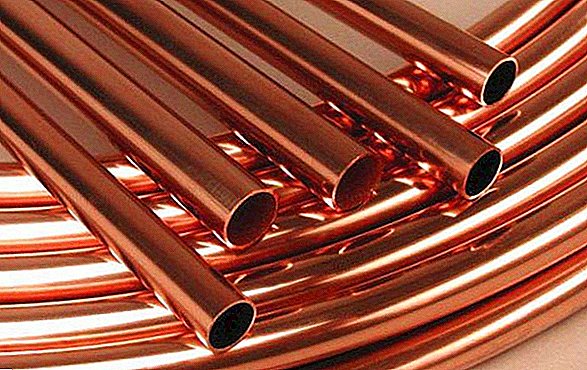
- steel - durable, reliable, durable, but with long-term exposure to water rust. In addition, such water supply requires considerable effort in the organization;
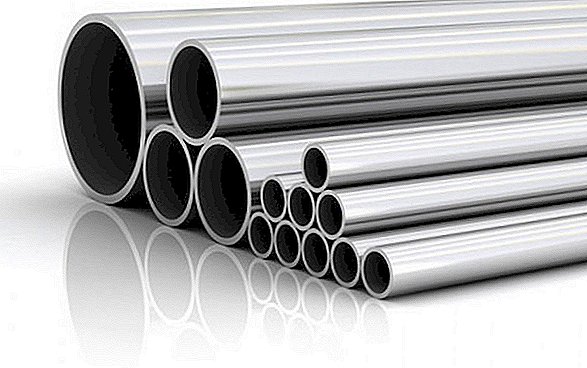
- plastic (polypropylene) - durable, easy to install, have low weight, do not leak, do not corrode, are relatively cheap;
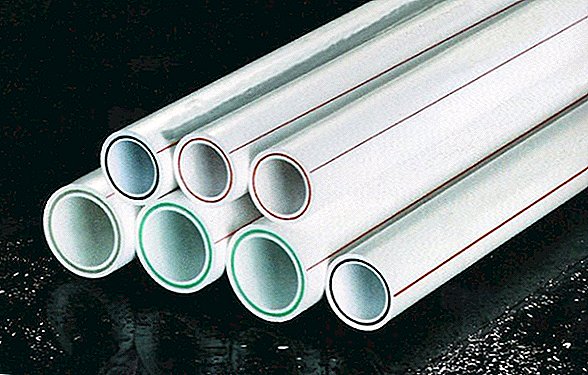
- metal plastic - easy to install, prevent the accumulation of deposits and the appearance of rust, but quite sensitive to high and low temperatures, break down when bent.

Plastic pipes are not afraid of corrosion, do not leak, easily lend themselves to the desired shape, cost much less than metal-plastic or copper. The term of operation of such water supply is about 50 years.
For a tight and durable connection of the elements of the system, you will need a special valves: valves, fittings, plumbing accessories. Fittings - connecting corners, tees, adapters, should be chosen from the same material as the pipe.
Important! HProof fittings must be of the highest quality, proven and reliable manufacturers. You should not save on it, because good fittings will prevent the system from breaking and flowing.
To plumbing include drain tanks, faucets (taps), siphons. Professionals also do not advise to save on these devices.
From the tools when installing the plumbing you will need a soldering iron or iron, with which soldering of plastic products is performed. You can buy it at any hardware store, it is inexpensive.
Technology create a plumbing system
Before directly starting to create a water supply system, it is recommended to think over the water supply scheme, in which the main nodes, water intake points and other individual elements are noted.
Laying of the house-to-well water supply system
The installation of the water supply system begins with the pipe installation, which must be brought to all the required places, that is, consumers. Movement begins from the source, in the role of which the well acts.
Video: how to equip the well and enter the water supply to the house
Piping is carried out below the level of soil freezing, on a sandy base.
Important! If the pipeline is laid on the border of soil freezing, then the pipes should be wrapped with insulating material to avoid freezing of water resources during the winter period.
Products made of polypropylene with an inner diameter of 3 cm are ideal as pipes. In the event that the water supply is long, the pipes are joined with bell-shaped clamps of a suitable shape: angular, straight, triangular, etc.
Pipe through the clamp or adapter to the thread, you need to attach to the pump. Next from the source is laying pipes to the house, to the hydroaccumulator.
The scheme of the pipe is performed by one of the methods:
- Serial connection. This method is great for small houses with the number of tenants 2-3 people. The principle of operation of the scheme is simple: water resources flow through the main pipe into the house, and a tee is installed next to each water outlet (tap, mixer), which directs water to the consumer. A significant disadvantage of this installation is the very low water pressure when opening several taps at once.
- Collector connection. Its essence lies in the fact that the pipes are laid from the collector to each individual point. In this case, the water pressure for the taps will be almost the same.
 The best option for distributing pipes is the second. Despite the fact that it will cost a bit more expensive, however, it will allow to get a good, high-quality flow of water resources of the necessary pressure.
The best option for distributing pipes is the second. Despite the fact that it will cost a bit more expensive, however, it will allow to get a good, high-quality flow of water resources of the necessary pressure.When performing pipe wiring, it is recommended to adhere to several basic rules:
- Pipes are carried out, bypassing all construction structures. If it is impossible to do this, then they must pass through the wall in a special glass.
- All parts of the system in the house should be carried out in such a way that they are at some distance from the walls. This will make it possible, if necessary, to facilitate the repair procedure.
- If the outer corners are bypassed, then the pipe should be carried out at a distance of 1.5 cm from it, while bypassing the inner corners - at a distance of 4 cm.
- It is recommended to fix the pipeline elements with the help of special single or double clips.
Video: advantages and disadvantages of pipe wiring with tees or a collector
As mentioned above, the connection of polypropylene pipes of the water supply system is carried out with the help of a soldering iron.
Installation of the caisson
For installation of the caisson should be prepared in advance recess. To do this, a hole is dug around the well up to 2 m deep and approximately 1.5 m wide, depending on the dimensions of the container used. If during excavation the pit is filled with water, then it is deepened by several centimeters and in parallel with this, the fluid is pumped out.
The result should be a pit, inside of which the casing is located. At the bottom of the caisson you need to cut a hole whose diameter is equal to the diameter of the pipe.
Then the container should be lowered into the pit, keeping to the center, after which the casing can be cut and welded to the bottom of the caisson using electric welding.
Video: how is the installation of the caisson
It is recommended to install a pipe for the removal of water resources to the resulting construction and install the pump electrical cable.
Caisson should be filled with soil, leaving on the surface only the hatch required to enter the middle of the structure.
Pump connection
The next stage of the pipeline is to install and connect the pump. They occur according to this algorithm:
- before installing the pump, it is necessary to thoroughly clean the well until the water ceases to precipitate;
- in the well approximately at a distance of 1 m from the bottom of the source, the pump must be placed, while it must be entirely in the water;
- along with this, it is necessary to install a PVC pipe through which water is supplied to the top, and a cable required to control the operation of the pump;
- after installation of the pump should be carried out installation start-protection device and non-return valve;
- The final step is to adjust the pressure in the tank. The pressure indicator should be 0.9 of the pressure at start-up.
Video: selection, piping and installation of the pump in the well with your own hands
Having carried out the installation of the pump, it is possible to install the cap, the function of which is to protect the source mouth from foreign objects.
Installation of the accumulator
Installing the accumulator allows you to guarantee uninterrupted supply of water resources in the water supply system. The principle of the system is simple: after turning on the pump, the empty tank begins to fill with water.
When opening a tap in the house, the water comes not from the well directly, but from the reservoir of the accumulator.
As water resources are consumed, the pump automatically turns on and replenishes water scarcity.
The unit should be installed in such a way that in the future it can be easily reached, repaired or replaced.
Video on how to install the accumulator
In the place of installation of the hydroaccumulator, in the direction of water movement, you must install a check valve. In addition, before and after installation, it is recommended to install a drain valve, which is required to drain the water.
At the end of the work you need to firmly secure the battery through the rubber seal. This will protect it and also reduce the level of vibration.
It is known that every house or apartment requires the presence of skilled hands. Read how you can do it yourself: cover the roof with ondulin, glue down the different types of wallpaper, insulate the window frames for the winter, and build the porch with your own hands.
System testing
After completion of all construction work, it is necessary to test the system for strength, integrity and tightness. To do this, the system must be filled with water and allowed to stand for about two hours.
After the specified time has elapsed, for 30 minutes twice, with an interval of 10 minutes, increase the working pressure by one and a half times.
The working pressure is 0.6 MPa (a pressure gauge is used to measure the pressure). Then it is necessary to drain the water from the system and thoroughly inspect the pipes for integrity, leakage, etc.
Video: water system testing
If the pipeline is in perfect condition, it can be allowed to operate.
Conducting a water supply system with your own hands is a difficult and responsible process, but it is quite possible for anyone who has the minimum knowledge and skills in this area. In the process of work, the main thing is to follow all instructions and take precautions. And if there are doubts about their qualifications, then it is better to entrust the organization of the water supply system to professionals.










